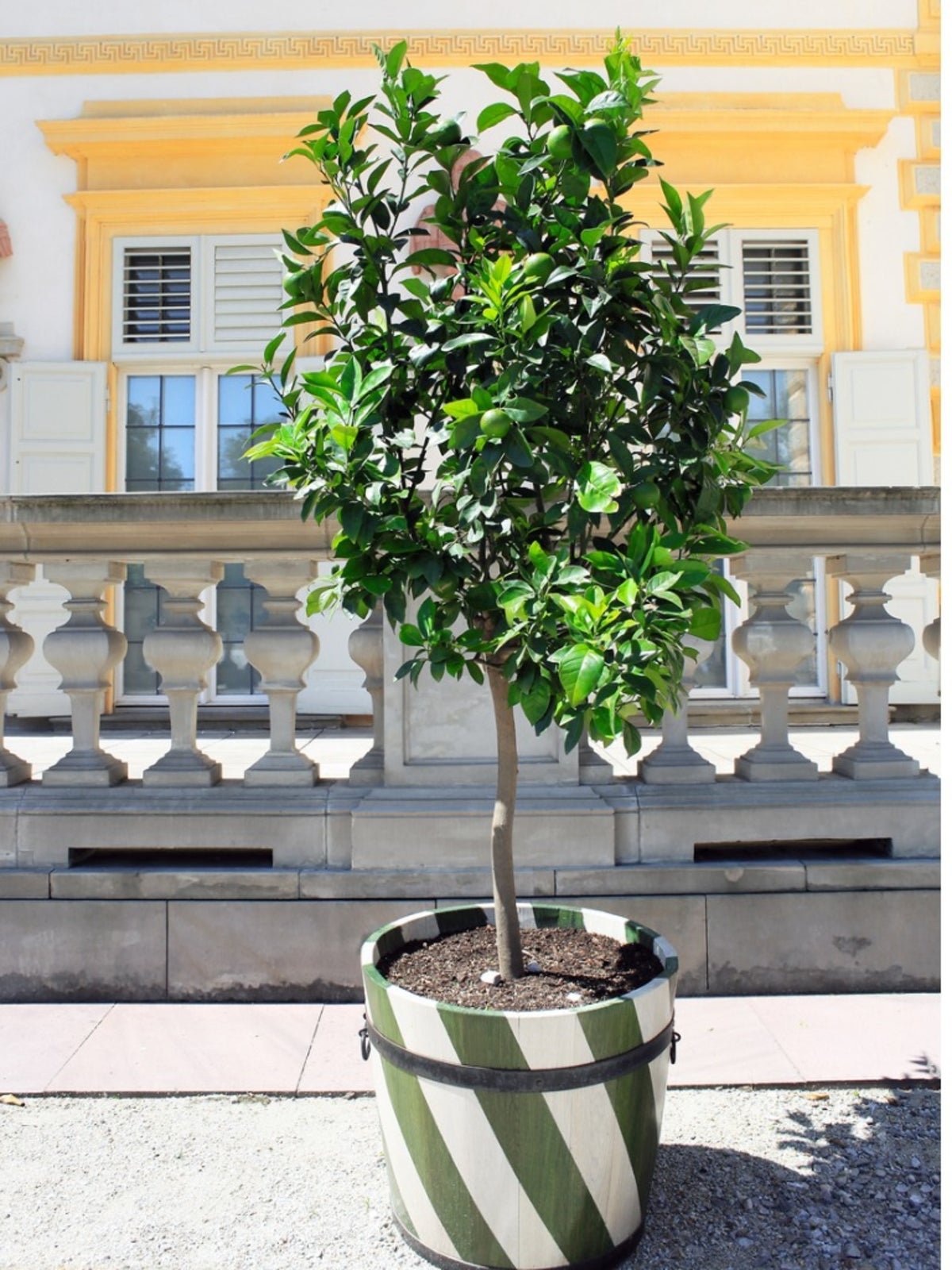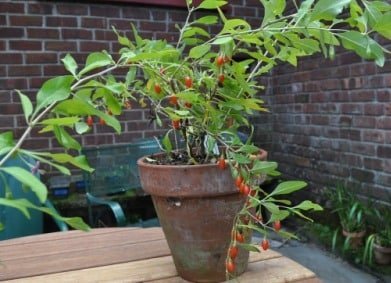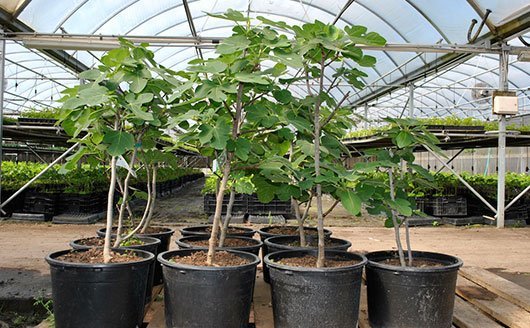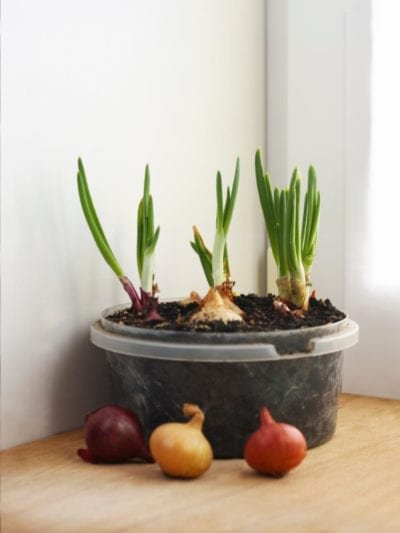how to grow key lime tree in a pot – [Beginners Guide]
If you’re a fan of citrus, have you ever considered growing your own key lime tree? It may seem like a daunting task, but with the right tools and knowledge, it’s entirely possible to grow your own key limes in a pot right in your own home.
As someone who has grown key lime trees in pots for years, I can confidently say that it’s a great idea for many reasons. First of all, growing key lime trees in pots is an excellent way to enjoy fresh, juicy limes without the need for a large garden or yard. You can easily place the pot on a balcony, patio, or even indoors near a sunny window.
Another great thing about growing key limes in pots is that it allows you to control the growing conditions. This means you can ensure that your key lime tree is getting the right amount of sunlight, water, and nutrients. It also means that you can move the pot around to find the ideal growing conditions for your tree throughout the year.
In this guide, we’ll cover everything you need to know about how to successfully grow a key lime tree in a pot. From selecting the right variety of key lime tree to choosing the right pot and soil, we’ll walk you through the entire process step-by-step. We’ll also discuss how to care for your tree, including watering, fertilizing, and pruning.
So, if you’re ready to enjoy fresh, delicious key limes straight from your own homegrown tree, let’s get started!
Pot or container selection
When it comes to growing a key lime tree in a pot, selecting the right pot is also crucial for the health and success of your plant. Here are some things to consider when choosing a pot for your key lime tree:
Size and capacity
Key lime trees can grow quite large, so it’s important to choose a pot that is large enough to accommodate their growth. As a general rule, you should aim for a pot that is at least 16 inches (40 cm) in diameter and 18 inches (45 cm) deep. This will give your key lime tree enough space to spread its roots and grow to its full potential.
Construction
The construction of your pot is also important for the health of your key lime tree. Here are some things to consider:
- Material: Choose a pot that is made of a durable material, such as ceramic, plastic, or fiberglass. Avoid pots made of metal or wood, as they may leach chemicals into the soil or rot over time. Additionally, choose a light-colored pot that will reflect sunlight rather than absorb it, as this can prevent the roots from overheating.
- Drainage: Make sure your pot has drainage holes in the bottom to allow excess water to drain out. If your pot doesn’t have drainage holes, you can drill some yourself or add a layer of rocks or gravel in the bottom to help with drainage. Poor drainage can cause root rot and other issues.
- Insulation: Because key lime trees are sensitive to cold temperatures, it’s important to choose a pot with good insulation. Look for pots that are double-walled or have insulation built in. Alternatively, you can wrap your pot in insulation during the winter months.
By choosing the right size and construction for your pot, you can give your key lime tree the best chance at thriving and producing delicious fruit.
Make suitable soil mix
When it comes to growing key lime trees at home, the soil mix you use is just as important as the pot you choose. Key lime trees require a well-draining soil mix that is slightly acidic, rich in nutrients, and has good water-holding capacity. Here are some tips for selecting the right soil mix for your key lime tree:
Type
It’s best to use a high-quality potting mix specifically formulated for citrus trees. These mixes are usually made from a combination of peat moss, perlite or vermiculite, and other organic materials, and are designed to provide the right balance of nutrients and drainage for your plants. Avoid using garden soil or topsoil, as they may contain pests, diseases, or contaminants that can harm your tree.
Mixture
In addition to using a high-quality potting mix, you can also add some amendments to your soil to improve its quality. Some options include:
Compost: Adding compost to your soil can help improve its structure, drainage, and nutrient content.
Organic fertilizers: You can use organic fertilizers, such as fish emulsion or kelp meal, to provide additional nutrients for your tree.
pH adjusters: Key lime trees prefer a slightly acidic soil pH (between 5.5 and 6.5). You can use sulfur or aluminum sulfate to lower the pH of your soil, or dolomite lime to raise it.
It’s important to note that key lime trees are sensitive to salt buildup, so you should avoid using soil mixes that contain high levels of fertilizer salts or adding too much fertilizer. Overfertilization can lead to leaf burn, stunted growth, and other problems. Always follow the instructions on the fertilizer package and avoid applying fertilizer when the soil is dry.
By choosing the right soil mix and making some simple amendments, you can create a healthy growing environment for your key lime tree and enjoy a bountiful harvest of delicious, juicy limes.
How to plant the key lime tree?
Planting a key lime tree in a pot at home is an excellent way to enjoy fresh limes right at your fingertips. Here is a step-by-step guide to help you plant your key lime tree in a pot:
Step 1: Choose the right pot
Choose a pot that is at least 18-20 inches deep and 18-20 inches in diameter. The pot should have drainage holes to allow excess water to drain away from the roots.
Step 2: Prepare the soil
Use a high-quality potting mix that is well-draining and specifically formulated for citrus trees. Add some organic compost or slow-release fertilizer to the potting mix to provide your key lime tree with the necessary nutrients.
Step 3: Plant the key lime tree
Carefully remove the key lime tree from its original container, and gently loosen the roots. Place the tree in the center of the pot, making sure that the root ball is level with the soil surface.
Fill the pot with the potting mix, and gently press down the soil to eliminate air pockets. Water the tree thoroughly to help settle the soil around the roots.
Step 4: Water and fertilize
Water your key lime tree regularly to keep the soil moist but not overly wet. A good rule of thumb is to water the tree when the top inch of soil feels dry. Fertilize your tree with a citrus-specific fertilizer during the growing season, following the instructions on the package.
Step 5: Provide the tree with the right environment
Place your key lime tree in a location that receives bright, indirect sunlight. Key lime trees need a lot of light to thrive. Avoid placing the tree in a drafty area, as it can cause the tree to drop leaves and fruit prematurely.
In summary, planting a key lime tree in a pot requires the right pot, soil mix, and environmental conditions. By following these simple steps, you can enjoy delicious key limes from your own tree in the comfort of your own home.
How to care for key lime tree?
Growing a key lime tree in a pot at home is a great way to enjoy fresh limes year-round. However, caring for your key lime tree properly is important to ensure it grows healthy and productive. Here’s a detailed guide to caring for your key lime tree in a pot:
Watering Requirement
Watering is an essential aspect of caring for a key lime tree. When it comes to watering, it’s important to keep the soil consistently moist, but not too wet. Overwatering can cause root rot, while underwatering can cause the tree to wilt and the leaves to drop. As a general rule of thumb, water your key lime tree deeply once a week, or more often in hot, dry weather. Be sure to check the soil moisture level by sticking your finger into the soil to a depth of 1-2 inches. If the soil feels dry at that depth, it’s time to water. Also, ensure that the pot has proper drainage to prevent waterlogged soil.
Fertilizer Requirement
Key lime trees require regular fertilization to grow and produce healthy fruit. Use a citrus-specific fertilizer or a balanced fertilizer with an NPK ratio of 10-10-10, applied every four weeks during the growing season. Reduce fertilization during the dormant winter season. It’s important not to overfertilize, which can damage the roots and reduce fruit production. If you notice signs of excessive foliage growth with less fruit production, you might be overfertilizing.
Sunlight Needs
Key lime trees need plenty of sunlight to grow and produce fruit. Choose a location that receives at least 6 hours of direct sunlight per day. If growing indoors, place the pot in a sunny location or use grow lights to provide adequate light.
Pruning & Training
Pruning and training your key lime tree can help maintain its shape and promote healthy growth. Prune your tree in late winter or early spring to remove any dead or damaged branches, crossing branches, or branches that grow straight up. Training your tree using a stake or trellis will help it grow straight and strong, and reduce the risk of broken branches under heavy fruit load.
Other Care
In addition to watering, fertilizing, and pruning, there are a few other things you can do to care for your key lime tree:
- Mulch the soil around the base of the tree with organic material, like shredded leaves or bark, to help retain moisture and suppress weed growth.
- Monitor for pests and diseases like spider mites, aphids, and scale insects. You can treat these problems with insecticidal soap or neem oil.
- Regularly check the leaves for any signs of nutrient deficiency, such as yellowing or wilting leaves, and adjust fertilizer accordingly.
- Harvest limes when they are fully ripe and ready, which is when they turn yellow or yellow-green and have a slight give when squeezed. Avoid harvesting unripe limes or leaving ripe fruit on the tree too long, as this can reduce fruit quality and overall tree health.
By following these guidelines, you can grow a healthy and productive key lime tree in a pot at home, and enjoy the delicious fruits of your labor.
Common problems
Other Issues
In addition to the common problems mentioned above, there are other issues that may affect the growth and health of key lime trees grown in pots. Here are some examples:
Root-bound: If the key lime tree outgrows its pot, its roots can become root-bound, which means they become tangled and compacted. This can restrict the tree’s ability to absorb water and nutrients, leading to stunted growth and poor fruit production. To prevent this, it’s important to repot the tree every 2-3 years, or whenever you notice the roots circling around the bottom of the pot.
Overwatering: Key lime trees are sensitive to overwatering, which can cause root rot and other issues. To avoid this, make sure the pot has good drainage holes, and don’t water the tree too often or too much. Only water the tree when the top inch of soil feels dry to the touch.
Underwatering: On the other hand, underwatering can also be a problem for key lime trees grown in pots. If the soil becomes too dry, the tree may wilt and its leaves may turn yellow or brown. To prevent this, water the tree deeply whenever you water it, and make sure the soil stays consistently moist but not waterlogged.
Inadequate Light: Key lime trees need plenty of sunlight to thrive, and if they don’t get enough, they may become leggy, weak, and produce less fruit. Make sure your key lime tree gets at least 6-8 hours of direct sunlight per day. If you live in a region with harsh summers or cold winters, you may need to move the tree indoors or provide it with supplemental lighting.
Nutrient Deficiencies: Key lime trees require certain nutrients to grow and produce fruit, and if they don’t get enough, they may develop nutrient deficiencies that can affect their growth and health. Common nutrient deficiencies include nitrogen, phosphorus, and potassium. To prevent this, fertilize your key lime tree with a balanced fertilizer according to the package instructions, and supplement with micronutrients if necessary.
Temperature and Humidity: Key lime trees prefer warm temperatures and high humidity, and if they are exposed to extreme heat or cold, they may suffer from stress and poor growth. To prevent this, keep your key lime tree in a spot with stable temperatures between 60-80 degrees Fahrenheit, and provide it with humidity by placing a tray of water near the tree or misting its leaves regularly.
Harvesting & storing homegrown key lime tree
When to Harvest and Store Key Limes
Harvesting key limes requires close attention to the fruit’s ripening process. The fruit should be picked when it has reached its mature size and has begun to show signs of color change from green to yellow. The best way to determine if a key lime is ripe and ready for harvest is to give it a gentle squeeze. A ripe key lime should give slightly when pressed, and the skin should feel slightly soft. If the fruit feels hard, it is not yet ripe, and if it feels mushy, it is overripe.
It’s important to harvest key limes as soon as they are ripe, as leaving them on the tree too long can lead to a decline in fruit quality. Once you’ve harvested the fruit, it’s important to store it properly to keep it fresh and flavorful. Here are some tips for storing key limes:
- Store key limes in a cool, dry place away from direct sunlight. A pantry or cool basement is an ideal location.
- Do not store key limes in the refrigerator, as the cold temperature can damage the fruit and cause it to spoil more quickly.
- If you need to store key limes for an extended period, you can freeze them. Wash and dry the fruit, then wrap each lime in plastic wrap and place them in a resealable plastic bag. They can be stored in the freezer for up to six months.
By following these guidelines, you can ensure that your homegrown key limes remain fresh and flavorful for as long as possible. Enjoy them in a variety of recipes, including key lime pie, cocktails, and marinades.
Growing key lime tree in container – Conclusion
Congratulations on learning how to grow a key lime tree in a pot! With the right information, growing your own citrus tree at home can be a rewarding experience. From choosing the right pot and soil mix to caring for your tree and harvesting the fruit, this guide has provided you with all the necessary information to get started.
Growing a key lime tree in a pot not only adds beauty to your living space but also provides you with fresh, juicy limes to use in cooking, drinks, or any other way you like. And with the added benefit of being able to control the growing conditions, you can be sure that you are getting high-quality produce that is free of harmful chemicals.
So why not give it a try? Take the plunge and start growing your own key lime tree at home today. With the tips and techniques outlined in this guide, you can be sure to have a bountiful harvest of delicious key limes in no time. Happy gardening!








